Posted by Elena del Valle on March 30, 2016
By Jay Gronlund
President, The Pathfinder Group
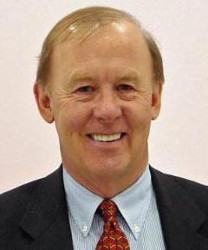
Jay Gronlund, president, The Pathfinder Group
Photo: Jay Gronlund
Before the internet, marketers had a relatively free reign for making questionable competitive claims, creating a brand image of superiority and hence demanding a premium price. But the internet has changed the ground rules. Instant access to endless information and objective feedback from friends has enabled consumers to seek and find the truth behind such promises. This has also led to an atmosphere of extensive mistrust of companies, CEO’s and even many established brands, especially among Hispanic Millennials. Today consumers want authenticity.
We are living in an age of growing skepticism and ebbing loyalty for many established brands. A recent poll by Havas, a reputable marketing agency, showed that consumers in America trust only about one fifth of all brands (least trusted – snacks and household gadgets). A report from the research firm, Mintel, indicated that about half of American shoppers trust smaller companies to do the right thing, compared to only 36% for large ones. The impact of these changing attitudes is already being felt by major brands. Catalina, a big marketing consulting firm, reported that 90 of the top 100 consumer packaged goods brands lost market share in the first half of 2015.
Click to read the entire Why Band Authenticity Is Most Important for Hispanic Millennials
Posted by Elena del Valle on March 22, 2016
Charlotte, NC — Witt/Kieffer has been retained by Carolinas HealthCare System (CHS) out of Charlotte, North Carolina to assist them in the search for a Vice President of Corporate Communications, Marketing and Outreach (VP, CCMO).
CHS offers a full continuum of care options in more than 900 care locations and Click to read the entire ad for Vice President of Corporate Communications, Marketing and Outreach (VP, CCMO)
Posted by Elena del Valle on March 18, 2016
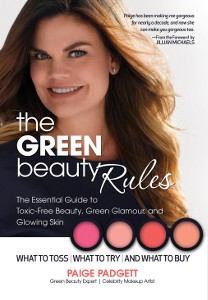
The Green Beauty Rules
Photos: cover by Don Flood and author photo by Michele LoBosco
Do you worry about artificial ingredients in your cosmetics and personal products but are reluctant to stop wearing makeup? After attending a presentation by Ken Cook, founder, Environmental Working Group, Paige Padgett, a makeup artist, had concerns about the ingredients in the products she used so she began to explore toxic-free alternatives.
When asked by email how she defines the term she said, “That is difficult as it’s different for everyone. For me it’s about being sustainable. Organic and natural are ideal but sustainable takes it a bit further. Ingredients should be sustainable which includes being non-toxic.”
From concept to publication she dedicated two years to The Green Beauty Rules: The Essential Guide to Toxic-Free Beauty, Green Glamour and Glowing Skin (HCI Books, $21.95), a 256-page softcover book peppered with full color photos published in 2015. In it, her first book, she promises a step-by-step guide and a sample clean beauty routine of approximately 200 chemically-safe beauty products, ranking 3 or lower on the Environmental Working Group’s Skin Deep Cosmetic Database. Green beauty, she explains in her book, doesn’t mean organic, all natural or completely chemical free; and minerals, for example, can’t be certified organic so mineral-based products aren’t organic. The main reason she wrote the book was because there were no books on that subject for women who use makeup and want to use green cosmetics, she explained by email.
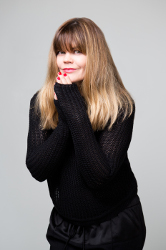
Paige Padgett, author, The Green Beauty Rules
“There are a few on the market that are fun but none from a makeup artists perspective that talks about chemicals and give a step by step guide to green your routine and beauty tutorials,” she said. When asked how she became an expert she said she never she studied chemistry but, “Rather I am one of the few professional pioneers in the industry. However, I have attended several dozen conferences, seminars, workshops, talks events on the subject over the years as well as chemistry courses interviewing prominent people in the industry and writing for magazines on the subject.”
According to her bio, Padgett, the founder of PaigePadgett.com, was one of the first makeup artists to create a completely green makeup line. The biggest challenge she encountered in the book project was the time and cost of photography. The biggest surprise? “That when you write a book you are not finished. You have to market the book forever,” she said.
She believes in green beauty that is chemically safe, cruelty free and eco-friendly. That means avoiding petrochemicals and nanoparticles, she says. In the book she explains that they have been linked to allergies, skin irritation, cancer, serious health issues, neuro and respiratory damage, birth defect, and disruption of the endocrine system. In a chapter titled The Nasties she lists examples of those products and why readers should not use them. The chapter includes a list of 20 of the most common harmful chemicals often present in beauty products. For example, she says parabens are hormone disruptors found in 99 percent of cosmetics.
In the book, she provides suggestions for shopping venues, vegan and gluten-free brands, and products under $15. She also shares information on nail care, hair care, bath and body products, sun care and hair removal products, as well as products for travel, and organic fragrances.
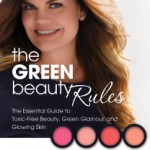
Click to buy The Green Beauty Rules
Comments:
Filed Under: Books
Posted by Elena del Valle on March 7, 2016
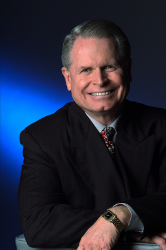
Ray Zinn, author, Tough Things First
Photo: McGraw Hill
A podcast interview with Ray Zinn, author, Tough Things First (see Former Silicon Valley CEO shares his secrets to success), is available in the Podcast Section of Hispanic Marketing & Public Relations, HispanicMPR.com. During the podcast, he discusses how doing tough things first may be essential to getting ahead with Elena del Valle, host of the HispanicMPR.com podcast.
During the podcast, he discusses how doing tough things first may be essential to getting ahead with Elena del Valle, host of the HispanicMPR.com podcast.
Ray is an inventor, entrepreneur, and the longest serving CEO of a publicly traded company in Silicon Valley. He is best known for creating and selling the first Wafer Stepper (an industry standard piece of semiconductor manufacturing equipment), and for co-founding semiconductor company, Micrel (acquired by Microchip in 2015), which provides essential components for smartphones, consumer electronics and enterprise networks.
He served as chief executive officer, chairman of its Board of Directors and president since Micrel’s inception in 1978 until his retirement in August 2015. Some credit his philosophy on people, servant leadership, humanistic management and the ethics of corporate culture with Micrel’s nearly unbroken profitability. Ray holds more than 20 patents for semiconductor design. A proud great-grandfather, he is actively-retired and mentoring entrepreneurs.
To listen to the interview, scroll down until you see “Podcast” on the right hand side, then select “HMPR Ray Zinn” and click on the play button below or download the MP3 file to your iPod or MP3 player to listen on the go, in your car or at home. To download it, click on the arrow of the recording you wish to copy and save it to disk. The podcast will remain listed in the March 2015 section of the podcast archive.
Posted by Elena del Valle on March 4, 2016
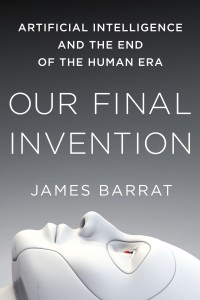
Our Final Invention
Photos: book cover courtesy of St. Martin’s Press, and author photo courtesy of Ruth Lynn Miller
Filmmaker James Barrat was stunned when he stumbled on an issue he found so complex and important that he felt it necessary to write about it rather than produce a documentary. Four years later his book, Our Final Invention: Artificial Intelligence and the End of the Human Era (St. Martin’s Press, $16.99), was published. He is now keen to spread the word about the Artificial Intelligence (AI) issue further through a film, provided he finds funding.
“The AI Risk issue struck me as hugely important and all but unknown,” the author said by email. “There were no books or films about it, and the only people discussing it were technologists and philosophers. They were working hard on solving the problem, but not on publicizing it. As a documentary filmmaker, I bring complex scientific and historical subjects to large audiences. That’s my expertise. So I felt uniquely positioned, even duty-bound, to spread the word. I wrote a book rather than make a film because even simplified AI Risk is a complex subject. An average hour-long documentary film contains just 5,000 words. I knew I could do a better job at bringing this subject to a wide audience with a book of 80,000 words.”
The softcover book, his first, is divided into an Introduction and 16 chapters. He wrote it for the general public convinced everyone should become award of AI issues. In the book, he says he believes AGI, an advanced super intelligence, could arise from Wall Street. That while an intelligence explosion might be missed by the average person, the secretive environment on Wall Street lends itself to the development of such technology. He also believes the developers of artificial intelligence may posses the same lack of moral fiber as the oft maligned financial executives who have repeatedly misbehaved without intense regulation.
“Artificial Intelligence is the science and study of creating machines that perform functions normally performed by human intelligence,” he said when asked to define the concepts for non scientists. “These include the whole range of human cognitive abilities: logical reasoning, navigation, object recognition, language processing, theorem proving, learning, and much more. AGI is Artificial General Intelligence, or machine intelligence at roughly human level, in all its domains. ASI is Artificial Super Intelligence, or machine intelligence at greater than human level. We’re probably no more than two decades away from creating AGI. Shortly after that we’ll share the planet with ASIs that are thousands or millions of times more intelligent than we are. My book asks ‘Can we survive?’”
Where is the dividing line between an operating system and artificial intelligence? He describes an operating system as “simply the interface between you, a human, and the parts of the computer that process information. For example, Apple’s OS is functional computer window dressing that allows you to perform useful jobs with the computer’s processors, memory and other hardware. The OS isn’t intelligent.” Instead, Artificial Intelligence is a computer program or linked programs that perform acts of human-like intelligence in very narrow domains, such as search and navigation.
When asked if it is necessary for an entity to be self aware in order for it to be artificial intelligence, he said, “Artificial Intelligence is all around us – in our phones, our cars, our homes. It’s not self aware in any important sense. However, self-awareness may be necessary for AGI. In our own intelligence, self-awareness plays a large part. Our awareness of our bodies and minds and our environment impacts how we perform tasks, achieve goals, and learn. It remains to be seen if computers can emulate our intelligent behavior without self awareness. It may be possible. Probably it’ll be necessary for the computer to have some kind of self-awareness, for example, a mathematical model of itself and its environment.
But will it have anything like real consciousness? Will it know it exists? Good questions. I believe we’ll create wildly intelligent aliens. That is, they’ll be super effective at intelligent tasks, but they’ll perform them differently than we do, and they won’t possess an inner life anything like ours. For example, an airplane doesn’t fly like a bird or have other qualities of a bird, but it accomplishes the same essential feat much faster and for much longer, under harsher conditions. In the same way, a superintelligent machine will outperform us in every cognitive dimension. But it won’t have our mammalian evolutionary inheritance of empathy, or love. It won’t have an inner life at all unless we program one in. And we don’t have any idea how to do that.”
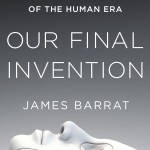
Click to buy Our Final Invention
Comments:
Filed Under: Books
















